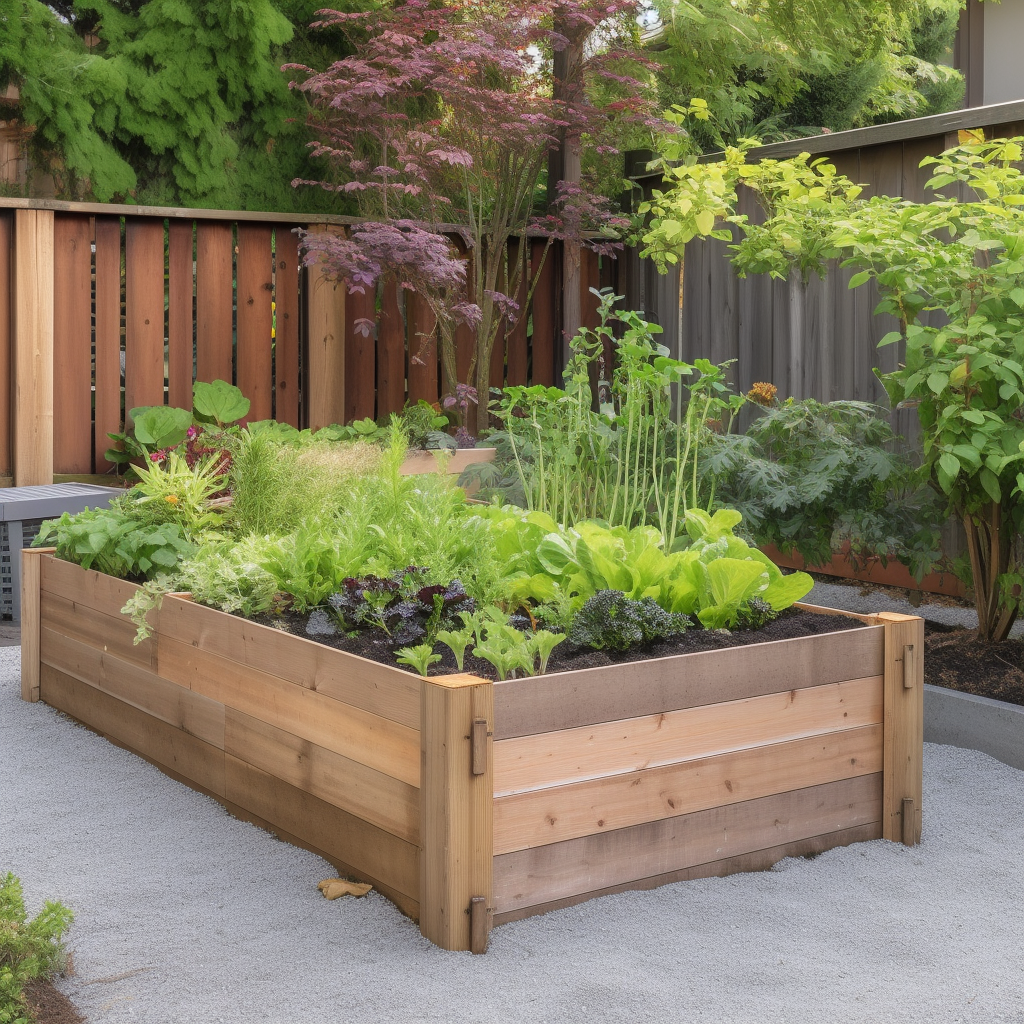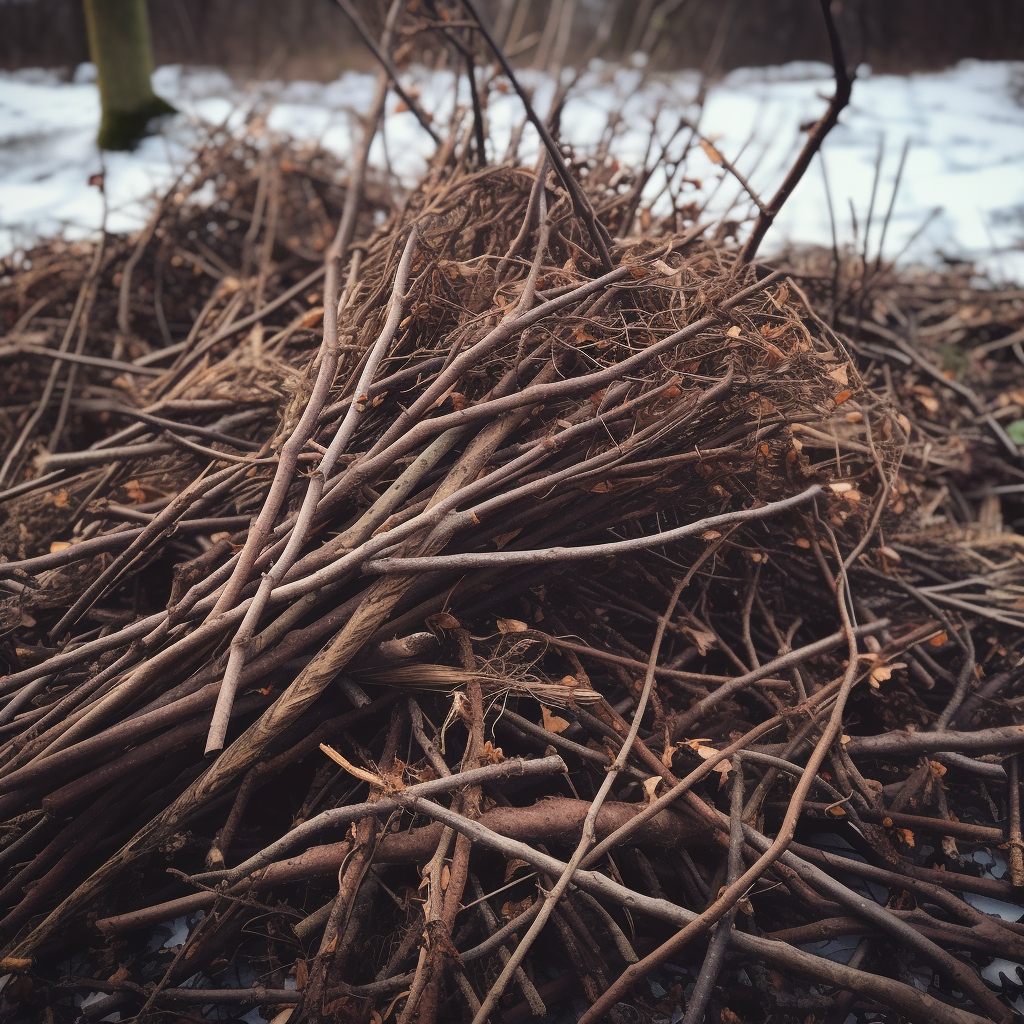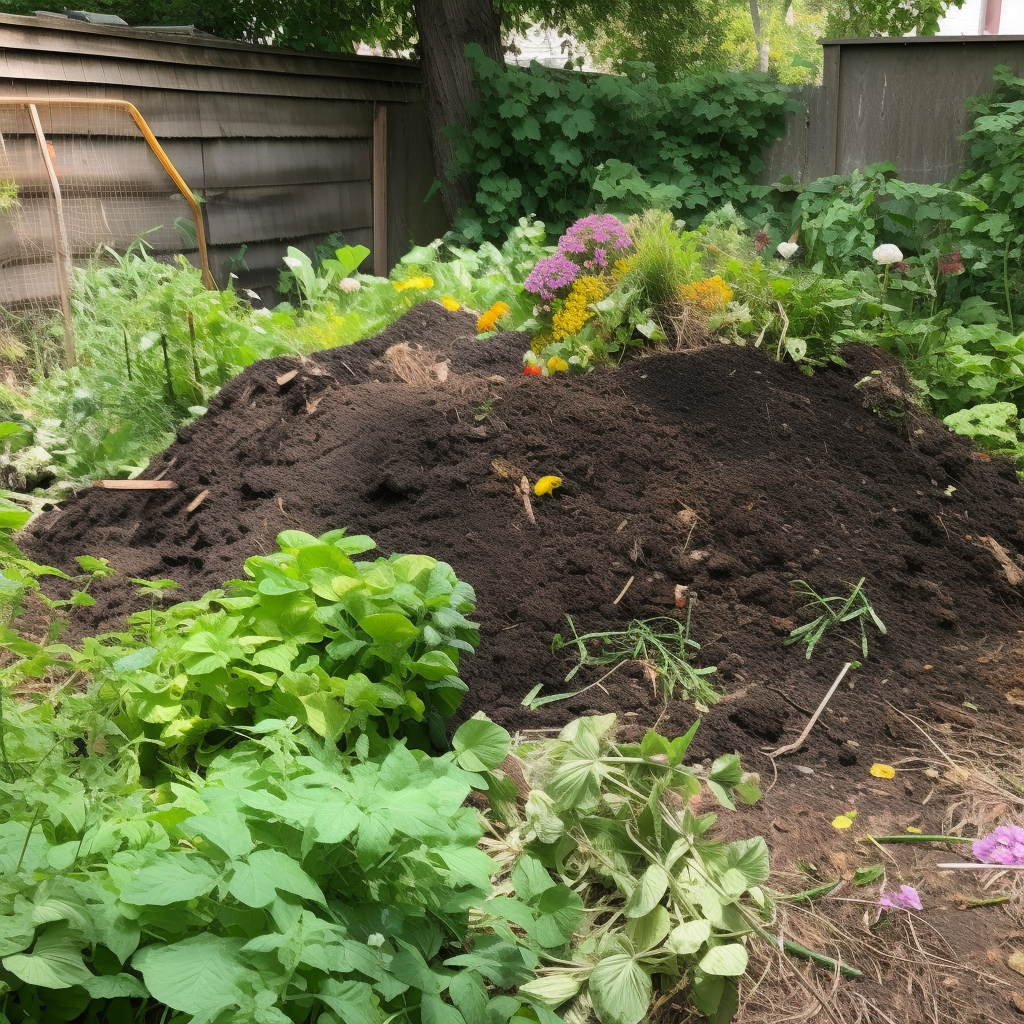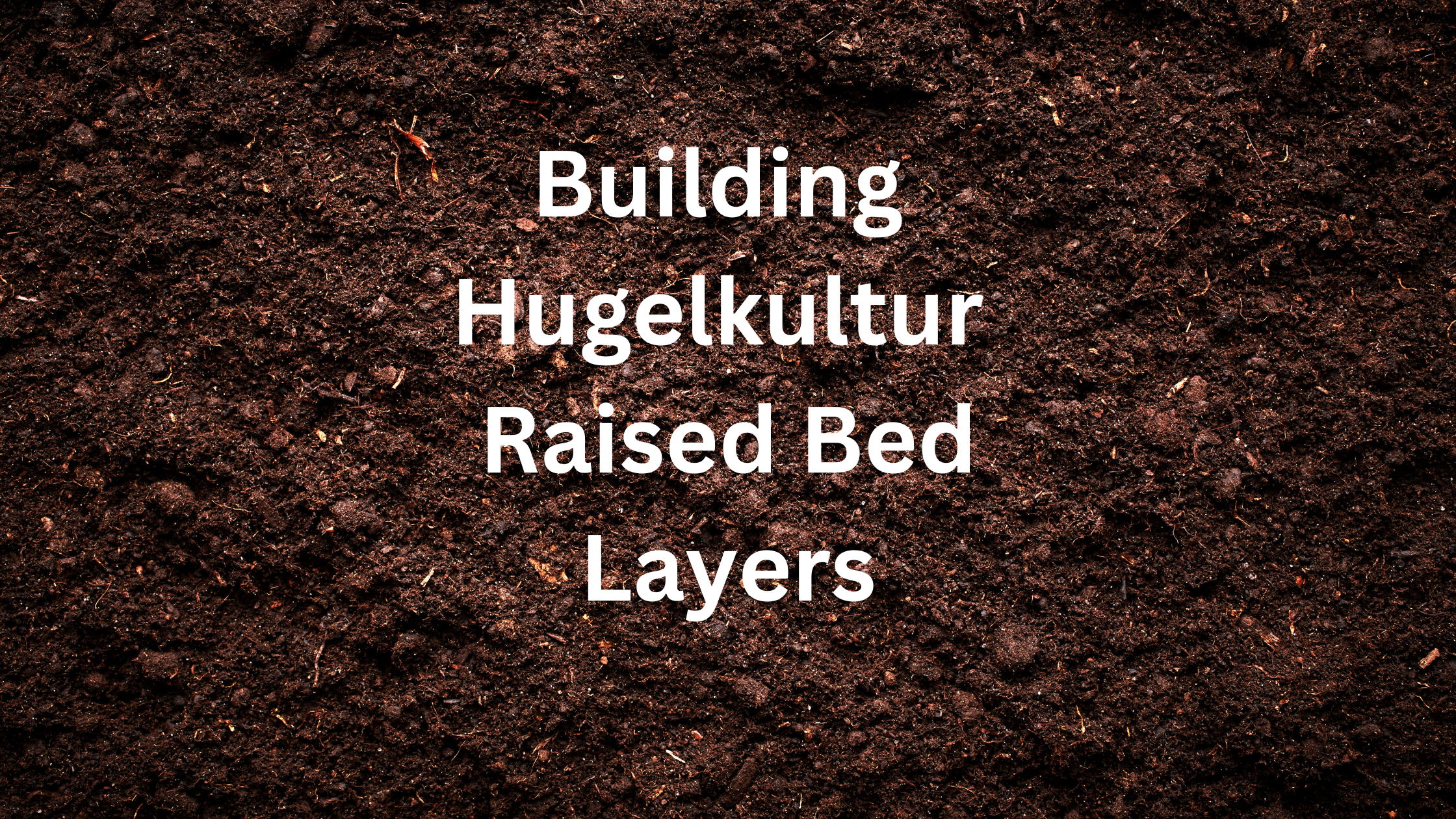Building Hugelkultur Raised Bed Layers
Building hugelkultur raised bed layers in a backyard vegetable garden is a great way to go. This style of garden bed building adds a ton of organic material to the soil. Creates places for moisture to be held late into the year and allows the soil microbiology to thrive. These are the layers that we have added to our raised garden beds to create thriving hugel beds.

Raised Beds Benefits from Hugelkultur
A raised garden bed is simply a garden bed contained by some type of physical barrier. Most commonly in the form of wooden raised garden beds, but it is possible to build out of many materials or even use large watering troughs or other containers. The biggest benefit for a hugelkultur bed is that they retain moisture. Due to the large amount of wood and organic material water saturates the material and wicks it slowly. A hugelkultur bed is a great way for urban homesteaders to large amounts of debris and put it right back into the soil.
Hugel beds are higher than typical garden beds. This makes harvesting vegetables easier as you don’t have to bend down all the to ground level.
If you need to buy materials for a hugelkultur bed, you are doing it wrong. They are a way to use up materials on the land that you would otherwise need to dispose of. Have an old rotten tree that fell down a couple of years ago, cut it up for the base layer of the bed. Toss in branches, leaves, grass clippings, unfinished compost piles etc. All of this organic material is going to continue to break down over time and continue to feed the microbiology of the soil and in return the plants.
While many will tout the idea that a hugelkultur bed never needs to be watered. I have not found this to be the case. If you live in a climate that has long dry periods the hugelkultur bed is going to dry out at some point. They do however allow the worms and microorganisms to absolutely thrive and create a wonderful place for roots to grow deep.

Layers of a Raised Hugel Bed
When building a raised hugel bed these are the basic layers to consider adding to your bed. The best thing about being an urban homesteader is being resourceful and building with what you have. If your property doesn’t have a ton of one of these layers skip it. There are no hard set rules for hugelkultur beds and it is ok if your beds are nowhere near 6 feet tall or taller like you will read elsewhere on the web. Most of the big beds unless built around full-size timber will reduce in size over the course of a few years anyway. I find that we add compost to our raised beds every year and this has allowed us to keep the cedar board-raised gardens filled.
Dig Down
Dig into the soil and save the topsoil. This will be the last layer of your hugelkultur bed. This proves the additional depth that you need to avoid building a huge vertical hugelkulture bed. Without digging down your hugel mound will be massive and not blend in as a regular raised bed in your garden. The choice is yours.
Wood
Wood is the base layer for a hugelkultur bed. I recommend using at least 6-inch diameter logs or cut rounds, but bigger is good as it will rot slower.
Small Wood Debris and Branches
I prefer using fruit tree pruning as the small woody debris material for filling in the spaces for the second layer. The logs will always create gaps, fill these with woody material. The more you can fill with branches or woodchips from a duck run, the more solid the hugel mound will be.

Leafy Greens
Leafy green material like comfrey or grass clippings is the third layer of the garden bed. This material will break down quickly and provide a boost of nitrogen against the heavy carbon layer of the wood.
Unfinished Compost
Add unfinished compost or animal manure to the fourth layer of the hugel bed. Again, a big dose of nitrogen is good close to all of the wood materials. This will feed the soil microorganisms and allow the soil life to flourish. We always seem to have an excess of unfinished compost to add to a bed. Earlier this later winter I built two new raised beds in animal watering troughs from Wilco. I dug out the chicken and duck run which was full of manure from the birds.

Finished Compost
At the fifth layer of the raised bed, it is important to use finished compost. You do not want to have material that is too hot to be close to the surface of the bed otherwise seeds will not germinate and transplants will not survive.
Topsoil or Raised Bed Soil
The top 6 inches or more should be topsoil for the last hugelkulture raised bed layers. We use the soil that we dug from the area at the start to finish off the bed. Alternatively, use bagged raised bed soil to top off the garden bed. Then all you need to do is decide what you are going to plant and get it done.
Tools for Building Hugelkultur Raised Bed Layers
There are only a few tools needed for building a hugel layer bed.
Saw
Use a saw to cut the wood to the appropriate size for the bed.
Shovel
A good shovel for digging the material out to get to the right depth.
Clippers
A pair of quality loppers or clippers to trim smaller branches and collect the materials for the leafy green layer.
Wheelbarrow
Hauling material one shovel scoop at a time will takes all day. A wheelbarrow will speed up the process moving the materials.
A hugelkultur bed takes a lot of work. However, they can be worth it. You get to use up lots of materials onsite and build beautiful soil while growing your veggie garden.




Recent Comments